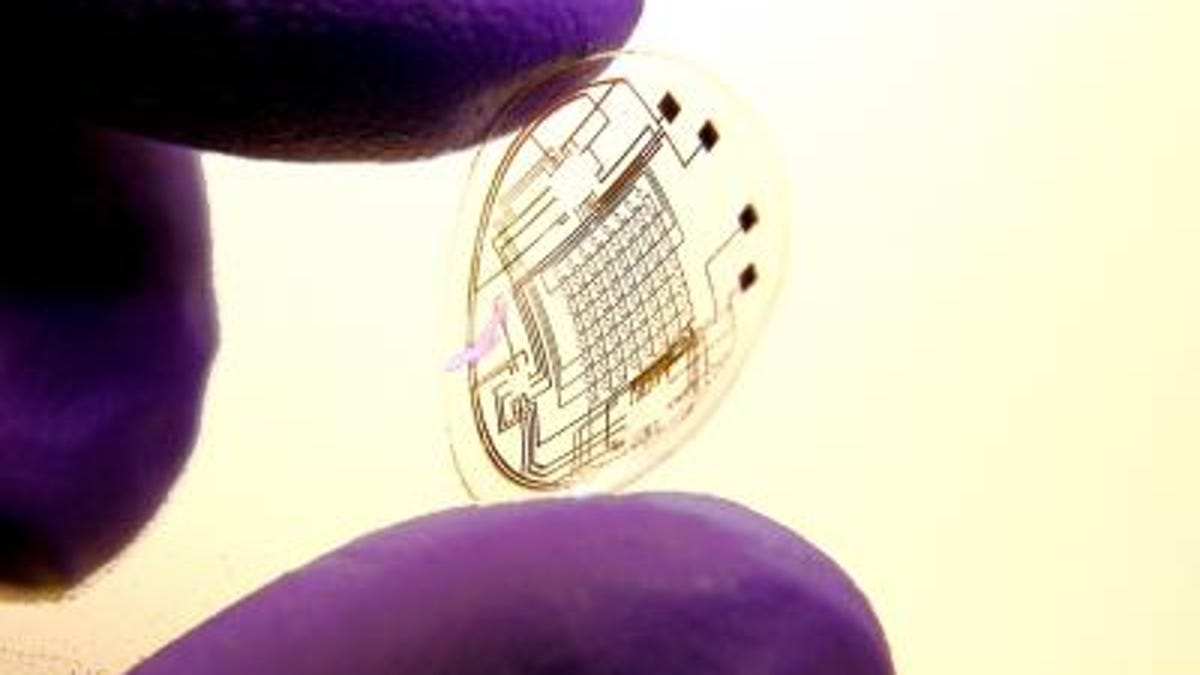Superhuman vision may be on the horizon
Engineers at the University of Washington are manufacturing flexible contact lenses with an imprinted electronic circuit and lights that can achieve a virtual display of the world.

Contact lenses have traditionally been engineered to help the visually impaired see the world around them more clearly--to attain perfect, or close to perfect, vision.
But why not super vision? Why not a lens that could superimpose holographic driving control panels over a pilot's otherwise normal view? Enable Web surfing on the go? Provide a virtual world for gamers that covers their entire field of vision instead of just a plasma screen?
Engineers at the University of Washington have been asking just that as they manufacture first-gen versions of the bionic eye in the form of contact lenses with an imprinted electronic circuit and lights.
"Conventional contact lenses are polymers formed in specific shapes to correct faulty vision," writes Babak A. Parviz, an associate professor at UW who heads a multi-disciplinary group on electronics in contact lenses, in the September 2009 issue of IEEE's Spectrum. "To turn such a lens into a functional system, we integrate control circuits, communication circuits, and miniature antennas into the lens using custom-built optoelectronic components. Those components will eventually include hundreds of LEDs, which will form images in front of the eye, such as words, charts, and photographs."
A separate device will probably relay information to the lens's control circuit, which will operate the optoelectronics in the lens. Even so, Parviz argues that these lenses don't need to be terribly complex to be useful:
Even a lens with a single pixel could aid people with impaired hearing or be incorporated as an indicator into computer games. With more colors and resolution, the repertoire could be expanded to include displaying text, translating speech into captions in real time, or offering visual cues from a navigation system. With basic image processing and Internet access, a contact lens display could unlock whole new worlds of visual information, unfettered by the constraints of a physical display.
Parviz's team still has to overcome several obstacles. For instance, the lens' key components need to be reduced in size and integrated onto about 1.5 square centimeters of polymer. The engineers haven't been able to do this yet, but they have devised a "specialized assembly process" by which they integrate several different components onto a lens.
Another issue is safety. Red LEDs typically are made of toxic aluminum gallium arsenide. To make a lens safe, the toxins must be thoroughly enveloped in a biocompatible substance, which must never bleed.
So far, Parviz writes, "We've fabricated prototype lenses with an LED, a small radio chip, and an antenna, and we've transmitted energy to the lens wirelessly, lighting the LED." They then encapsulated the lenses in a biocompatible polymer and tested them on rabbits with no noticeable adverse effect, although the rabbits only wore the lenses for 20-minute intervals.
Parviz isn't making any promises on when these lenses will be ready, or how they will initially be used, but he hopes that, as with iPhone apps, there will be countless input points from developers and tinkerers around the world.
The eyes may soon be the window to not only someone's soul, but his circuitry, too.

